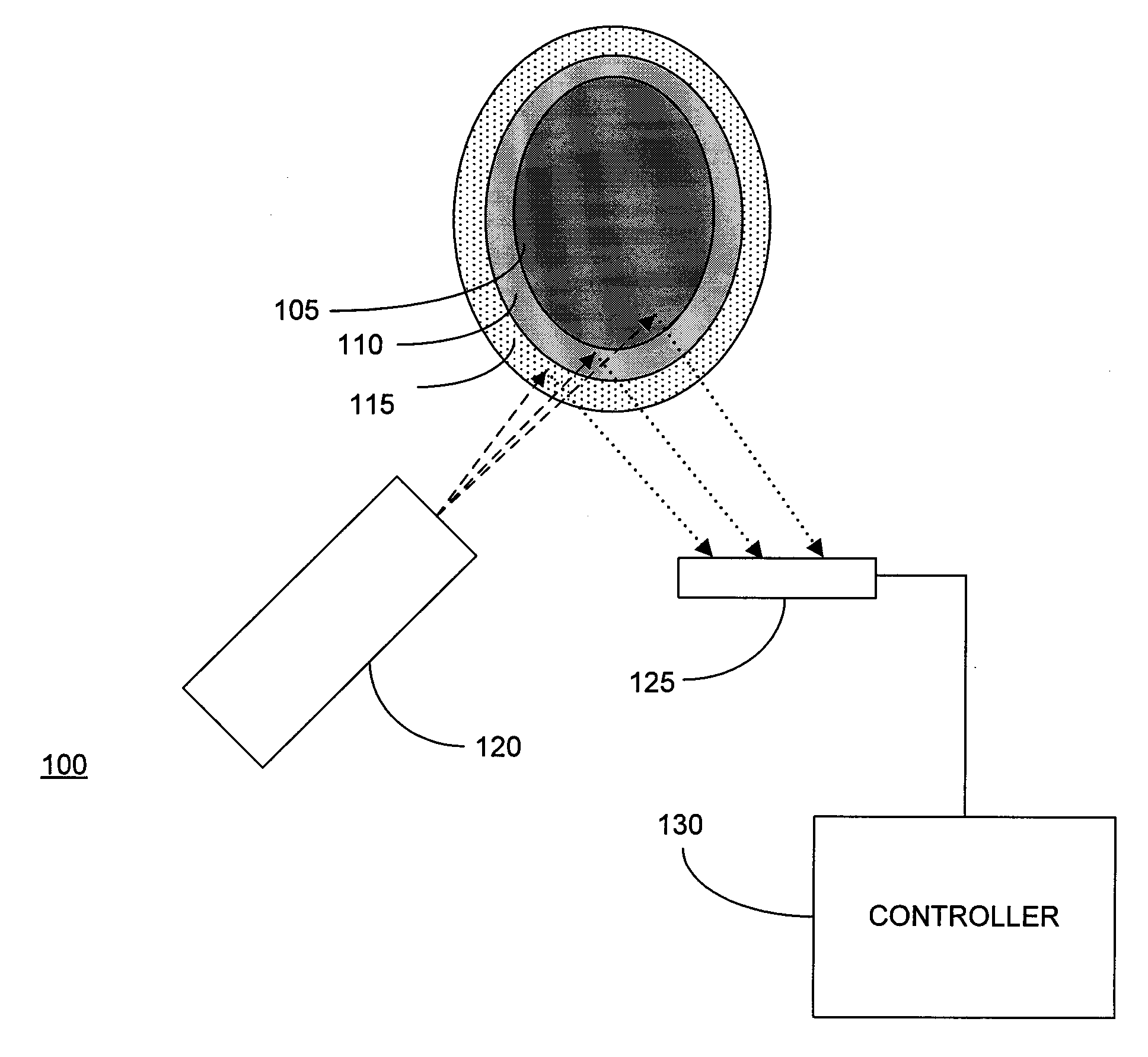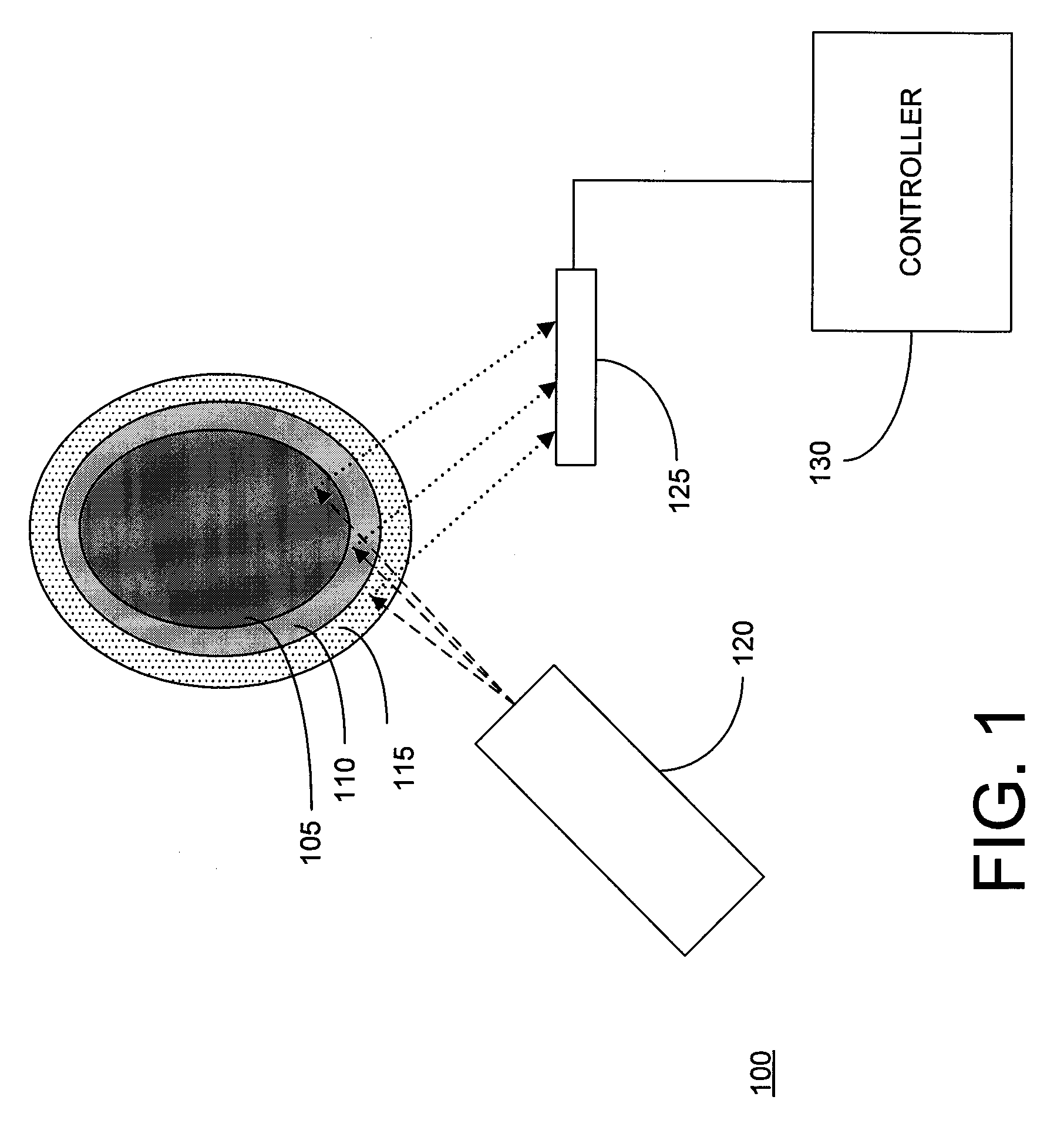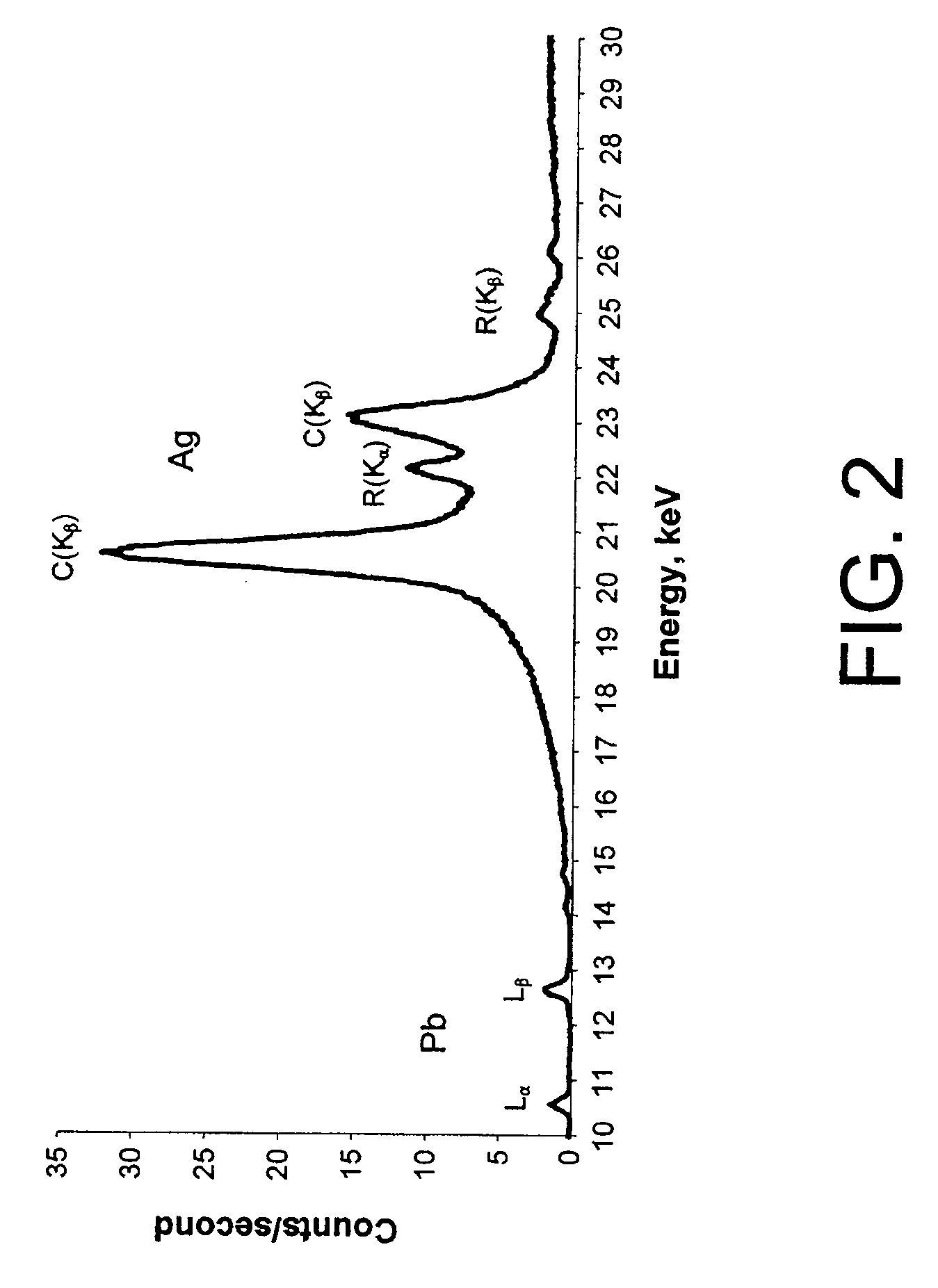In Vivo Measurement of Trace Elements in Bone by X-Ray Fluorescence
a trace element and fluorescence technology, applied in the direction of material analysis using wave/particle radiation, instruments, applications, etc., can solve the problems of time-consuming and burdensome, toxicity is a serious environmental and societal problem affecting intelligence, behavior and health, and the standard technique has significant problems associated with i
- Summary
- Abstract
- Description
- Claims
- Application Information
AI Technical Summary
Benefits of technology
Problems solved by technology
Method used
Image
Examples
Embodiment Construction
[0022]Embodiments of the present invention are described in the context of their use for in vivo measurement of the concentration in bone of a particular trace element, namely lead. However, it should be understood that the techniques described and depicted herein are useful for measurement of a variety of trace elements of interest, including but not limited to strontium, mercury, cadmium and selenium. Thus, unless specifically limited to lead, the claims should be construed as extending to the full range of elements suitable for measurement using the techniques of the invention. It should also be noted that embodiments of the invention are suitable for use in both human and animal test subjects.
[0023]FIG. 1 depicts an XRF analyzer 100 disposed to measure the lead concentration of bone 105 covered by a relatively thin layer of tissue (typically 110 (subcutaneous fat) and skin 115 (typically ˜1 mm in thickness). In human test subjects, it is generally preferable to select the tibia,...
PUM
 Login to View More
Login to View More Abstract
Description
Claims
Application Information
 Login to View More
Login to View More - R&D
- Intellectual Property
- Life Sciences
- Materials
- Tech Scout
- Unparalleled Data Quality
- Higher Quality Content
- 60% Fewer Hallucinations
Browse by: Latest US Patents, China's latest patents, Technical Efficacy Thesaurus, Application Domain, Technology Topic, Popular Technical Reports.
© 2025 PatSnap. All rights reserved.Legal|Privacy policy|Modern Slavery Act Transparency Statement|Sitemap|About US| Contact US: help@patsnap.com



